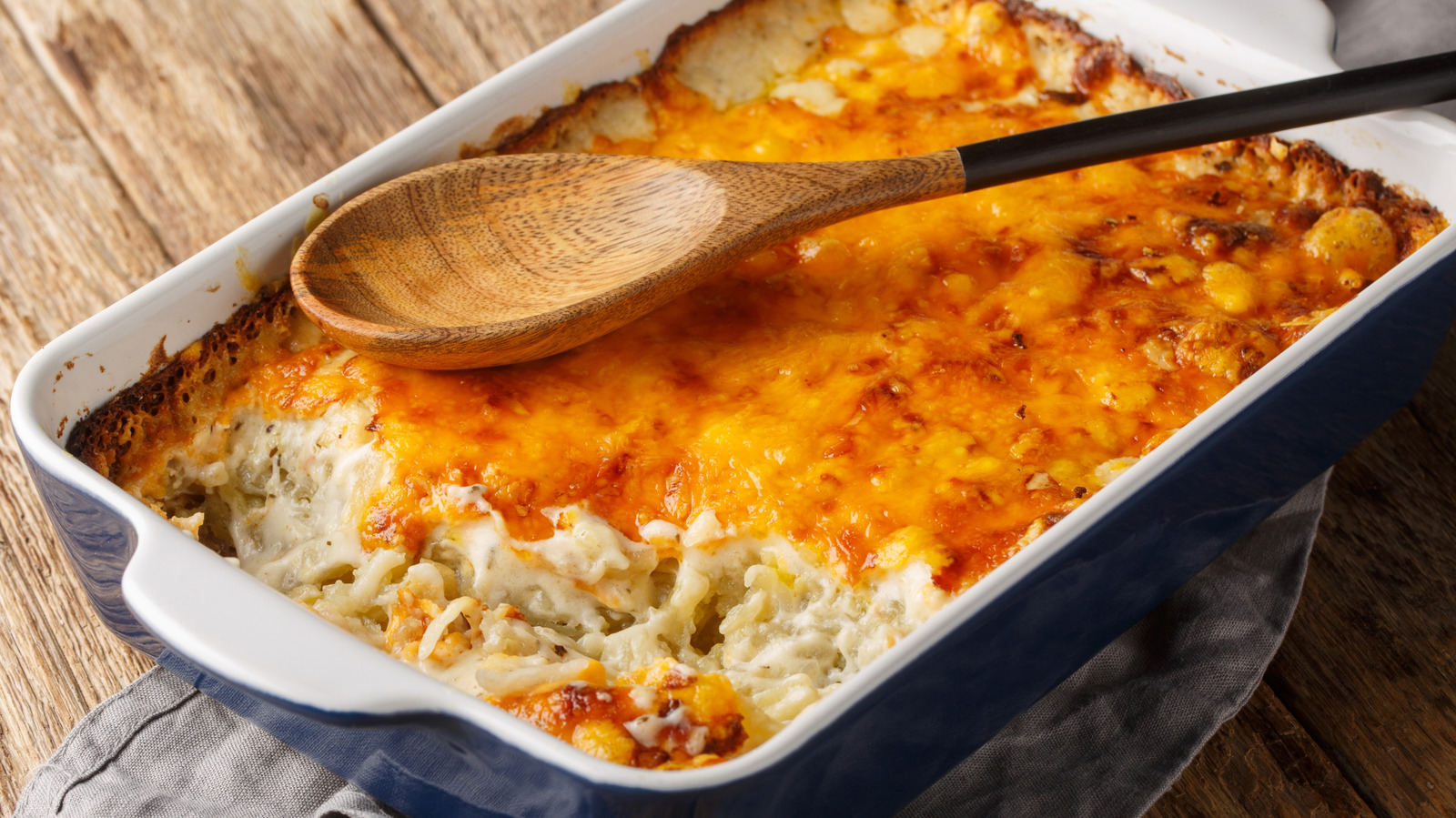
"Many casserole recipes use canned and frozen ingredients to expedite the cooking process and save money. However, if you add frozen ingredients directly to the casserole before baking it, you'll be left with a soggy mess. While frozen food like vegetables or tater tots are precooked and ready to use right out of the freezer, the freezing process transforms their water content into ice crystals. These ice crystals will then melt back into water, which leaches out of frozen vegetables, resulting in a watery casserole."
"If, for example, you're using frozen spinach in your lasagna, you can let it sit out and thaw at room temperature before pressing it into a metal colander or squeezing it in cheesecloth. However, if you want to uphold the tender bite of broccoli or the pop and crunch of kernled corn, thawing them at room temperature might be the reason the vegetables themselves are soggy."
Casseroles condense mains and sides into one dish and often use canned and frozen ingredients to save time and money. Adding frozen ingredients directly before baking creates excess water from melted ice crystals, producing a soggy casserole. Thawing and draining frozen food removes excess moisture. Thawing methods depend on the ingredient: thaw and press spinach in a colander or cheesecloth; sauté broccoli or kernled corn to evaporate water and preserve texture. Drain grease from meats to reduce liquid. Choose lower-fat cheeses and consider moisture-absorbing ingredients like flour or cornstarch.
Read at Tasting Table
Unable to calculate read time
Collection
[
|
...
]